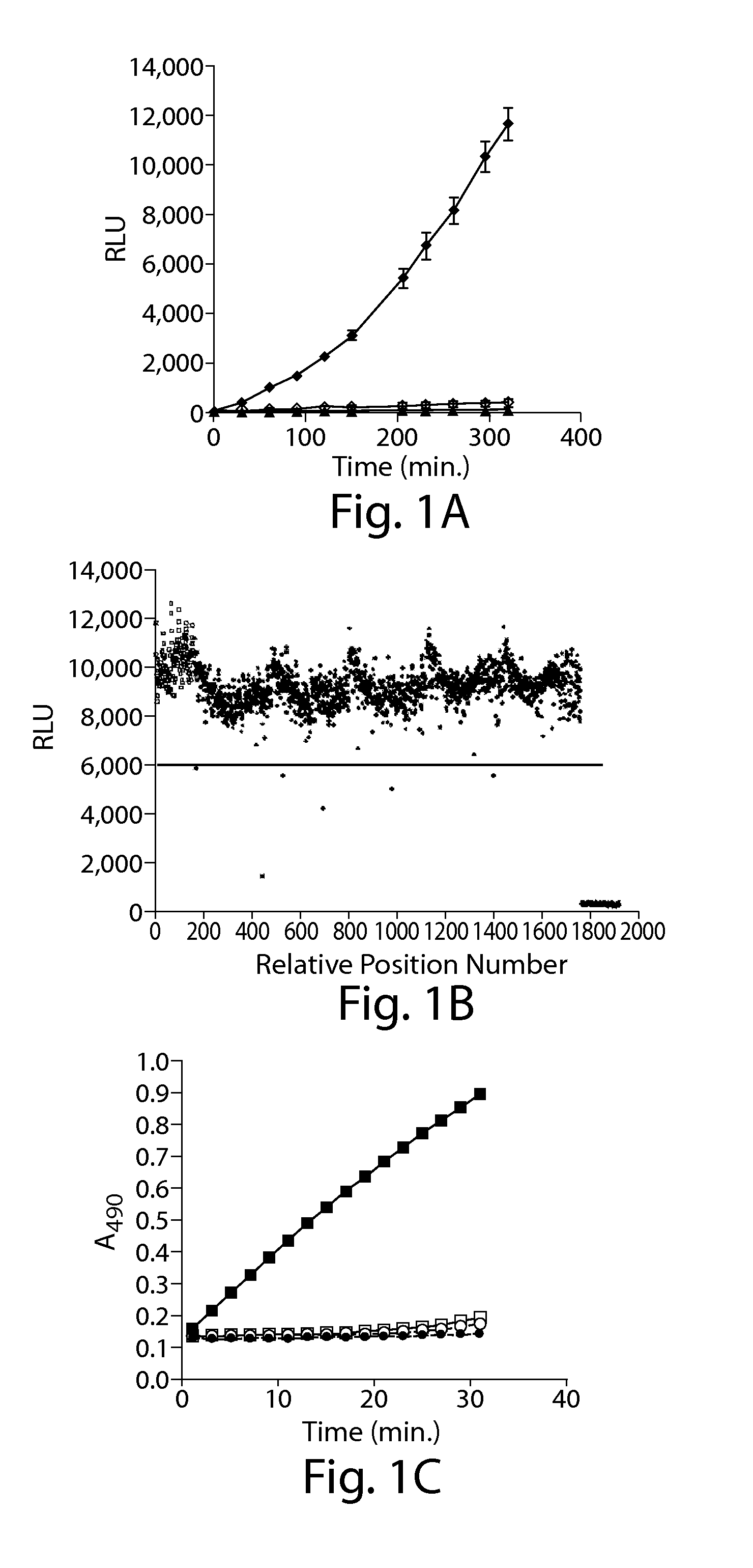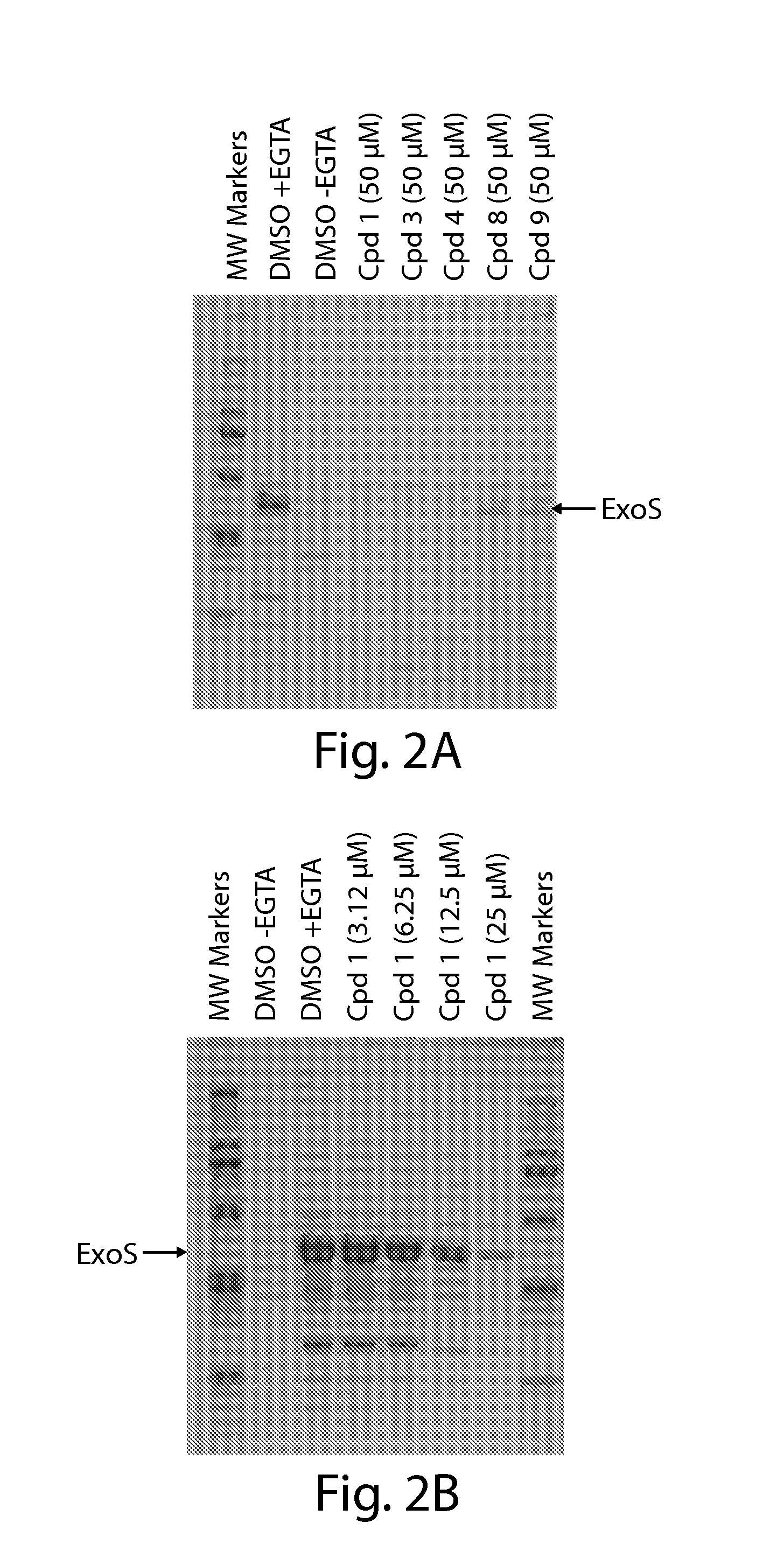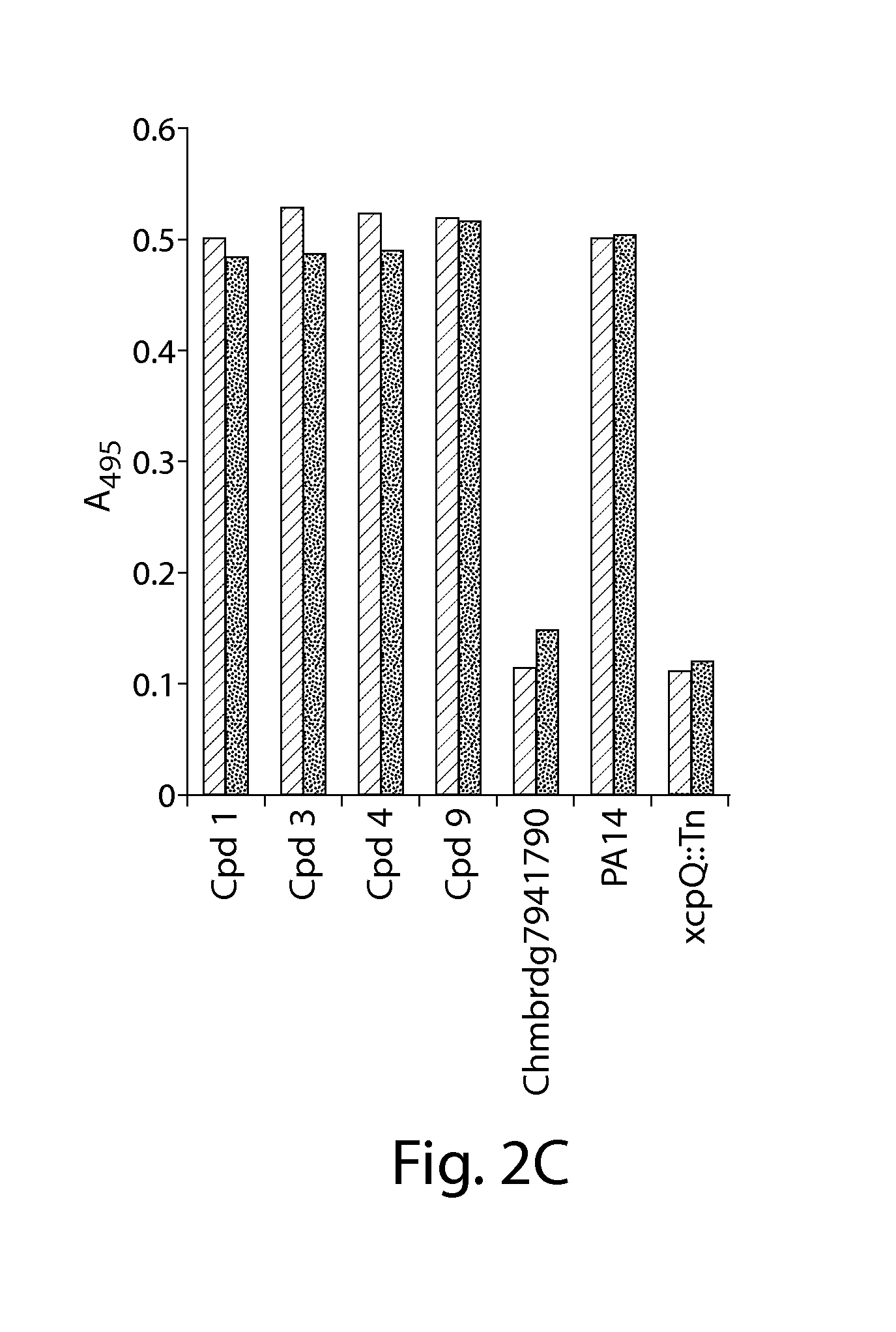Inhibitors Of Bacterial Type III Secretion System
a secretion system and inhibitor technology, applied in the field of therapeutic drugs for bacterial infection and disease, can solve the problems of poor clinical outcomes, local disruption of essentials, and significant association of functional t3ss, and achieve the effect of effectively killing infecting or contaminating bacteria
- Summary
- Abstract
- Description
- Claims
- Application Information
AI Technical Summary
Benefits of technology
Problems solved by technology
Method used
Image
Examples
example 1
Materials and Methods for Identification and Characterization of T3SS Inhibitors
Strains, Plasmids, and Growth Media
[0109]Bacterial strains and plasmids used for assays are described in Table 1, below. All P. aeruginosa strains were derivatives of PAO1 (21), PAK (1), or PA14 (45). E. coli TOP10 (Invitrogen), E. coli DB3.1 (GATEWAY® host, Invitrogen), E. coli SM10 (7), and E. coli S17-1 (ATCC 47055) were used as hosts for molecular cloning. Luria-Bertani (LB) medium (liquid and agar) was purchased from Difco. LB was supplemented with 30 μg / ml gentamicin (LBG) with or without 1 mM isopropyl-β-D-thiogalactopyranoside (IPTG) and 5 mM EGTA (LBGI and LBGIE, respectively).
TABLE 1Strains and PlasmidsReference orStrainGenotype / FeaturesSourceP. aeruginosa:MDM852PA01::pGSV3-‘exoT’-luxCDABEThis studyMDM1355PA01 ΔpscC::pGSV3-‘exoT’-luxCDABEThis studyMDM973PAK / pUCP24GW-lacIQ-lacPO-exoS::blaMThis studyMDM974PAK ΔpscC / pUCP24GW-lacIQ-lacPO-exoS::blaMThis studyMDM1156PAO-LAC / pUCP24GW-lacPO-luxCDABEThi...
example 2
Identification and Validation of Inhibitors of P. aeruginosa T3SS
[0126]A P. aeruginosa cell-based bioluminescent reporter screen (luciferase transcriptional reporter screen, described above) for the identification of T3SS inhibitors was constructed in an analogous fashion to that described previously in Yersinia (24). Due to tight coupling of T3SS gene regulation in P. aeruginosa with type III secretion of the negative regulator ExsE, reduced type III secretion capability results in decreased expression of all T3SS operons (47, 54). P. aeruginosa strains were constructed carrying a transcriptional fusion of the T3SS effector gene exoT to the luxCDABE operon of Photorhabdus luminescens and their luminescence production under T3SS-inducing and repressing conditions evaluated. When Ca++ levels remain high, e.g., no EGTA addition (55), or a key component of the T3SS assembly is deleted, e.g., the pscC gene encoding the secreton component of T3SS (27), T3SS is not functional and luminesc...
example 3
Inhibition of T3SS-Mediated Secretion of Native Effectors
[0129]To confirm that inhibitors identified by the cell-based reporter assays inhibit T3SS-mediated secretion of natural effectors, conditioned culture media, obtained from P. aeruginosa PAKΔTY, an ExoS-secreting strain, exposed to each of the five T3SS inhibitors at 50 μM during growth for 3 hours under T3SS inducing conditions, were concentrated and the secreted effectors were visualized on SDS-PAGE (FIG. 2A). All five compounds inhibited the secretion of ExoS from P. aeruginosa cells by at least 75%. Compounds 1,3, and 4 completely inhibited the secretion of ExoS (marked by an arrow in FIG. 2A) from P. aeruginosa PAKΔTY cells when present at 50 μM during T3SS induction. Compounds 8 and 9 reduced the amount of secreted effector significantly, but not completely at the 50 μM concentration.
[0130]The concentration-dependence of inhibition of native ExoS secretion was examined in detail for compound 1 and was found to be very si...
PUM
| Property | Measurement | Unit |
|---|---|---|
| Fraction | aaaaa | aaaaa |
| Fraction | aaaaa | aaaaa |
| Fraction | aaaaa | aaaaa |
Abstract
Description
Claims
Application Information
 Login to View More
Login to View More - R&D
- Intellectual Property
- Life Sciences
- Materials
- Tech Scout
- Unparalleled Data Quality
- Higher Quality Content
- 60% Fewer Hallucinations
Browse by: Latest US Patents, China's latest patents, Technical Efficacy Thesaurus, Application Domain, Technology Topic, Popular Technical Reports.
© 2025 PatSnap. All rights reserved.Legal|Privacy policy|Modern Slavery Act Transparency Statement|Sitemap|About US| Contact US: help@patsnap.com



